Service industries now very much dominate the world economy over product-based industries. It seems pretty clear that the dominance would grow with time. Yet, the recent recessions are proof that these very industries are hit most. The solution may lie in doing more with less, and BPA is the ideal methodology to adopt in these trying times of business competition.
Automation – the word used to be associated with robots, assembly lines, and science fiction movies but today it is part of a much larger paradigm shift in how enterprises operate globally.
Business process automation solution is the most effective way for businesses to streamline, scale, and automate a wide range of operations and functions that are currently being done manually. Operationally, companies have been juggling time and workload constraints for centuries.
Since software started to make it easier for staff to become more efficient, automation has been slowly making a positive impact. Now at the start of a new decade, business process automation (BPA) is how companies can take an automated leap forward. Taking this leap will make those who are yet to start automating processes more efficient, cost-effective, and ultimately, profitable.
Table of Contents
What is Business Process Automation (BPA)?
According to the 80-20 rule, every business has some tasks that require 80% of the total effort, money, and time but only contribute to 20% of the bottom line – every organization is held back by such tasks, often mundane and recurring in nature. Business Process Automation aims to use technology and software to automate such tasks, saving time, money, and manpower.
BPA helps streamline both individual tasks and workflows and can be visualized as an assembly line, removing the need for excess labor.
Automation has been around for a while. In fact, it was one of the major buzzwords of this decade, along with artificial intelligence, and Bitcoin. However, automation has been part of a paradigm shift, digitally transforming business. Part of this broader automation industry is BPA, a new approach to optimizing business operations, improving core competencies, and reducing costs. The result of this shift is that the automation business process industry is growing at a tremendous Compound Annual Growth Rate (CAGR) of 13.3% and is expected to reach over $12 billion in market value in the 3 years.
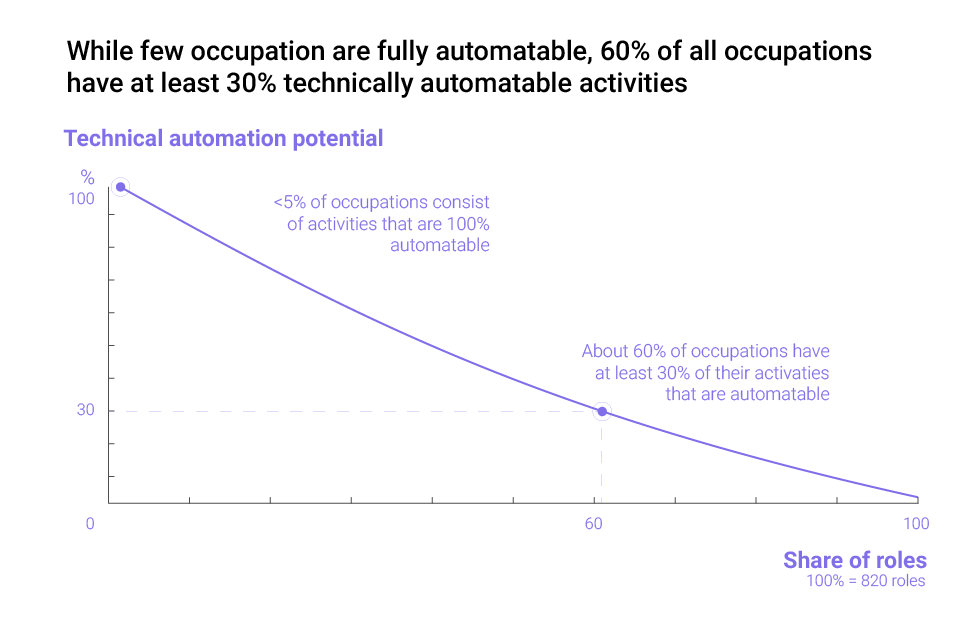
Getting Started with BPA
According to McKinsey & Company, up to 30 percent of activities can be automated in 60 percent of all occupations worldwide and for most enterprises, the process of automation starts with a pilot project, focusing on streamlining and workflow automation. Despite the small start, BPA requires the support of top-level executives and stakeholders as business process automation is highly scalable and is the most beneficial when implemented at scale.
In order for accurate progress tracking, metrics like duration, efficiency, and effectiveness of a task are documented so the results can be compared with the pre-automation figures. The post and pre-automation performance figures are also useful in automating other areas of the enterprise.
Choosing Which Business Operations to Automate
Choosing which business operations to automate begins with analyzing the workplace and identifying tasks that are repetitive and relatively simple tasks/workflows.
When considering business operations to be automated, the following tasks should be prioritized:
- Repetitive manual tasks
- Tasks that are duplicated across various workflows
- Inefficient or outdated workflows
- Tasks that require unnecessary communication
- Time-sensitive or urgent tasks
Here are some business process automation use cases, examples and automation ideas that tick all of the boxes mentioned above:
- Automated replies to customer queries
- Inventory management
- Placing orders
- Scheduling employee shifts
- Customer support
- Postal mail handling
Business Process Automation Examples
Since BPA performs best at scale, it’s unlikely that an enterprise will only automate an individual activity or process, more often than not, entire workflows and functions are automated for maximum optimization.
With that in mind, here are some real-world business process automation examples and automation ideas:
- HR Management
The most valuable asset of any enterprise is also the most complex and often the hardest to manage but contrary to popular belief, business process automation doesn’t simply replace its human counterpart but instead increases its operational efficiency.Here are some examples of activities that are often excellent for automation of HR-processes:- Payroll
- Schedule management
- Recruitment
- Forms
- Records management
There is also a growing shift in attitude among employees. According to G2, job seekers are much more likely to apply to companies that leverage technology to streamline the recruitment process. A highly optimized workplace assisted by automation has also become a significant performance and morale booster.
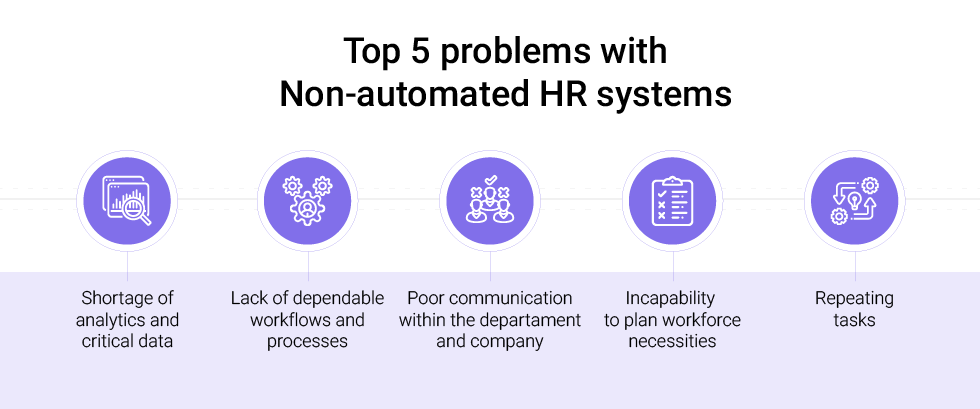
Top 5 Problems with Non-Automated HR Systems
- Analytics
Business process automation (BPA) is a powerful method of converting large chunks of unstructured data into automated reports that facilitate decision-making in various departments. For instance, consumer data that is often ignored can be leveraged to identify customer tastes and preferences and develop marketing and sales strategies. Similarly, BPA can also be used to set up employee analytics to capture data that helps evaluate an employee, team, or department’s performance. In most enterprises, the mechanism for data collection already exist, and in many cases, the data is passively collected but the information isn’t utilized because enterprises don’t want to divert additional resources to analysis, thus losing a potential competitive edge. BPA helps overcome this problem automating the entire process. - Customer Relationship Management
Maintaining good relationships with customers holds so much value that the CRM industry on its own is worth nearly $40 billion. However, leveraging good relations with consumers isn’t nearly as expensive or complex as many companies that end up shying away from CRM think. BPA extends to customer relationship management in the form of chatbots, helpdesks, automated phone calls, and email replies. Chatbots, in particular, have become wildly popular in recent years thanks to the immense progress made in the field. In 2020, enterprises can get highly advanced AI chatbots that are capable of complete complex tasks such as booking flight tickets, making (or canceling) reservations, bringing entire eCommerce stores to the SMS app, and more.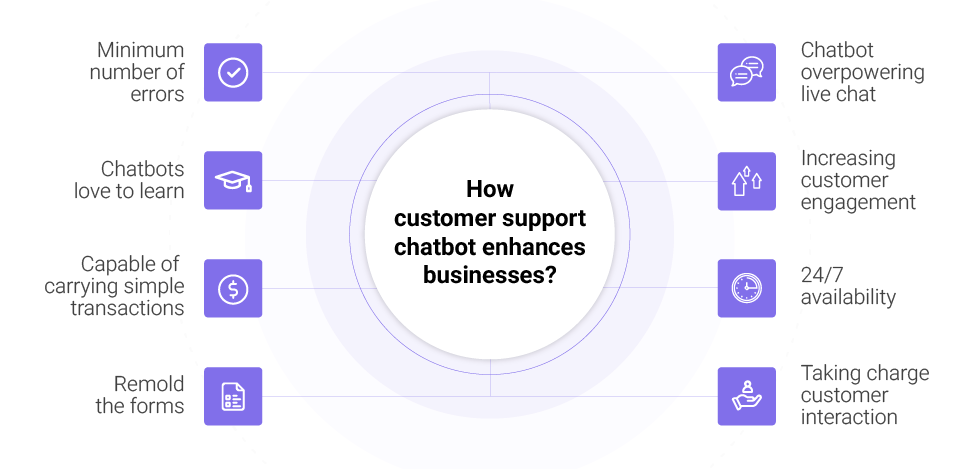
How Customer Support Chatbot Enhances Business? - Inventory Management and Planning
Automation business provides an alternative to inventory management that is the more accurate, faster, and more efficient alternative. Similar to CRM, automating inventory management becomes a necessity for enterprises as they scale up in order to maintain accuracy, keep costs in check, and ensure optimum spend on inventory. Also similar to CRM, inventory management can be automated in a number of ways ranging from very basic like automated barcode scanning all the way to complex inventory management and planning systems that have the ability to accurately track the movement of goods, send timely notifications, and even place an order with suppliers. - Operations Management
Operations management is a broad term that includes various operations performed in order to deliver a product or service, while business process automation can be used to manage and optimize many of these operations and workflows. For instance, slow and ambiguous communication is often a weakness for many enterprises that can be solved through automation. BPA is especially useful for alerts, reports, and reminders.Similarly, every business has tasks that are unique to their business or their industry but still repetitive and therefore they can be easily automated. In fact, BPA can automate entire workflows like audit, compliance, and data capture to a considerable extent, freeing up significant resources in the process.
Examples of Business Process Automation Solutions
BPA can be implemented across numerous business operational areas. If you ask yourself the question, “What is a business process?”, then think of a workflow involving multiple tasks and maybe even several different systems. Along with some human input, there is likely to be a lot of which can be automated.
Business Process Automation Example #1: Employee Onboarding & HR
Even when companies have HR departments, or work in partnership with HR providers for recruitment and onboarding, it’s often a chaotic and time-consuming process. From putting job adverts out to processing candidates and interviews. Once a candidate(s) are offered a role, there is even more paperwork.
Everyday HR functions and operations also involve a lot of paperwork too. All of this takes time and energy away from more important added-value work. HR team members are too busy dealing with mundane tasks when they could be playing a more useful role in an organization. Current and new staff could be also doing a dozen other tasks that are more useful, but instead, they’re filling out forms and spending time on admin tasks.
Instead, applying HR process automation solutions (for example, chatbots) to onboarding and HR functions would save an enormous amount of time and for employees and HR team members. Businesses, therefore, save money as staff time would be used more efficiently.
Business Process Automation Example #2: Purchasing and invoices
Purchase orders and invoices are another time-consuming and mundane activities that finance teams need to manage on a daily basis. It involves a lot of back-and-forth between departments, team members, and external providers, which can include accountants, payroll companies, and suppliers/vendors.
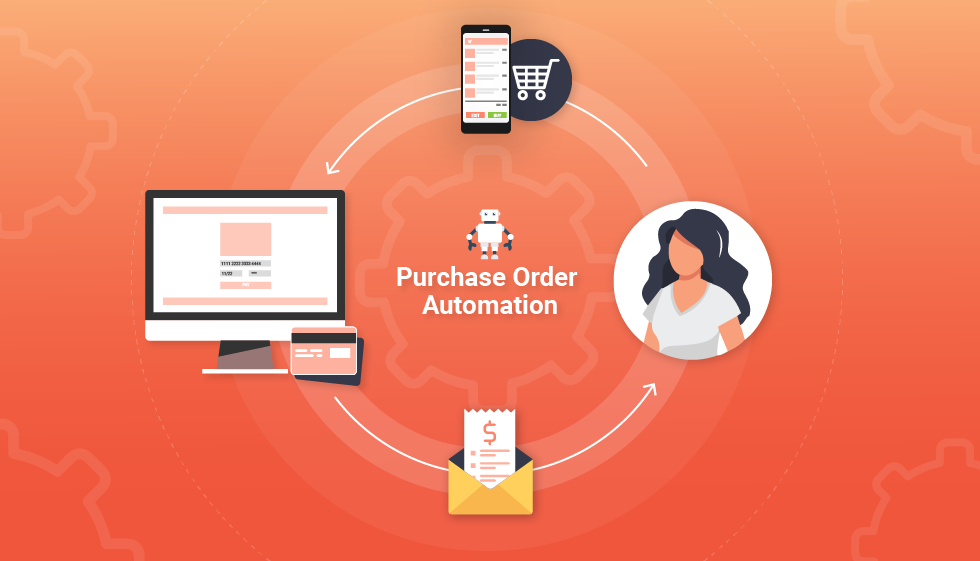
With process automation solutions, the majority of this manual work could be automated. Software systems can’t make purchasing and finance decisions, of course. This still needs human oversight and sign-off, but automating as much as possible would allow finance teams to refocus on more valuable work, adding more value to an organization instead of pushing forms around.
What are the benefits of automating business processes?
According to IBM, there is a strong correlation between businesses implementing BPA and higher-performance. Much of this increase in performance can be attributed to four key benefits of business process automation that every business enjoys.
- Removes Redundant Steps in Workflows
Streamlining workflows is a crucial part of improving the bottom line for any business and BPA plays a significant role in removing redundant steps from business operations. For instance, PNC Financial Services Group found that by automating business processes and rules, it saw an 80% reduction in their workload of manually reviewing bank loan applications. - Eliminates Unnecessary Points of Communication
A workplace with streamlined communication is one of the most important benefits of Business Process Automation (BPA) in Customer Communication. Every minute that employees and managers don’t spend on emails, phone calls, and creating reports is a minute spent doing something more productive. By setting up communications that are automatically triggered upon completion of a task (or another trigger), employees have one less thing to do.
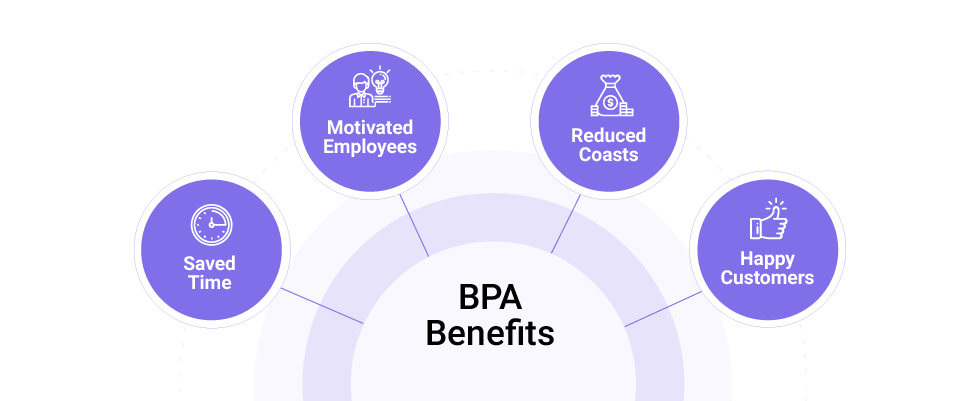 Top 4 Benefits of Business Process Automation
Top 4 Benefits of Business Process Automation
- Faster Time-to-Market
The result of saving a few hours in different business operations adds up, significantly and allows companies to reduce their time-to-market. For instance, paper-based processes typically see a reduction of 30–40% in the time taken to complete them after they have been automated. - Greater Stability and Accuracy
Once written, lines of code are far less likely to simply deteriorate or even change which means the results delivered through automation are consistent across the board and a lot more stable than deliverables from their human counterpart. In fact, Carlsberg Danmark was able to reduce the time taken to process orders by more than 90 percent through business process automation and at the same time, virtually removed all errors.
Areas of applying Business Process Automation solutions
BPA can be applied in almost every operational area. Some areas of most businesses are already more automated than others, such as customer services. Whereas others, such as finance and HR, would still benefit from an influx of automated solutions and systems. In many ways there are no limitations and restrictions to what businesses automate.
How to implement Business Process Automation solutions step-by-step
Before diving into an automation project you need to spend time on the following. Either internally or with the support of an IT and strategic partner with expertise in this area.
-
- For every operational area and function you want to automate, gain a clear understanding of every task, who’s responsible, what the workflow looks like, and what the inputs, throughputs, and outputs are.
- Once you are clear on this, and you’ve got the relevant stakeholder buy-in, then make sure to set clear goals for the automation outcomes and a roadmap for how these will be achieved.
- Work with a dedicated IT partner with expertise in this area to roll-out implementation and development. Do this through a phased approach. Process automation solutions for businesses should be implemented gradually.
- As part of that, training needs to be part of the roll-out, especially when the work of front-line staff changes as automation takes overwork they were doing. Now team members can work on more important and useful tasks instead of mundane admin duties.
- Move forward with a long-term mindset to ensure these changes are embedded into staff workflows, the company culture, how customer services are delivered, and to achieve the highest level of ROI.
Conclusion: Achieving More with Less
The premise behind BPA is to achieve more by doing less and when businesses implement BPA, they enjoy the innumerable benefits of automation – benefits that only increase as the company scales up the level of automation.
In the first part of this definitive guide on business process automation, we’ve explained what BPA is in-depth but the truth is, the automation of the business process is complex, and to truly realize its full potential, enterprises need an expert in BPA – like Master of Code Global.
Master of Code designs, builds, and launches exceptional mobile, web, and conversational experiences.






